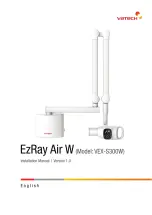
User and Service Manual
EMU40EX™
17
The Patient Event Switch attached to the Base Unit or Breakout Box is NOT intended for critical patient-safety-
related incidents.
The EMU40EX Amplifier system does NOT include SpO2 or Pulse Rate alarms.
Route patient cabling carefully to reduce the possibility of patient entanglement or strangulation.
As with all medical equipment, there is a risk of injury if the lanyard/belt and pouch(es) are used without ensuring
they are secured to the patient properly. Refer to the Adding the EMU40EX breakout box to a lanyard or belt
section for details.
Pulse Oximeter Warnings and Cautions
NOTE
: Tissue damage can occur due to incorrect placement of sensor.
A pulse oximeter should NOT be used as an apnea monitor.
Significant levels of dysfunctional hemoglobins (HbCO or MetHb) may cause inaccurate measurements.
Intravascular dyes such as indocyanine green or methylene blue may cause inaccurate measurements.
Excessive illumination may cause inaccurate measurements or loss of pulse signal.
Excessive patient movement may cause inaccurate measurements.
Venous pulsations may cause inaccurate measurements.
Carboxyhemoglobin may erroneously increase readings. The level of increase is approximately equal to the
amount of carboxyhemoglobin present. Dyes, or any substance containing dyes, that change usual arterial
pigmentation may cause erroneous readings.
Loss of pulse signal may occur when the patient has hypotension, severe vasoconstriction, severe anemia or
hypothermia, leading to misdiagnosis.
Loss of pulse signal can occur when there is arterial occlusion proximal to the sensor.
Loss of pulse signal can occur when the patient is in cardiac arrest or is in shock.
Placement of a sensor on an extremity with a blood pressure cuff, arterial catheter, or intravascular line may
cause inaccurate measurements.
Loss of pulse signal can occur when the sensor is too tight.
Содержание Xltek EMU40EX
Страница 1: ...EMU40EX User and Service Manual...
















































